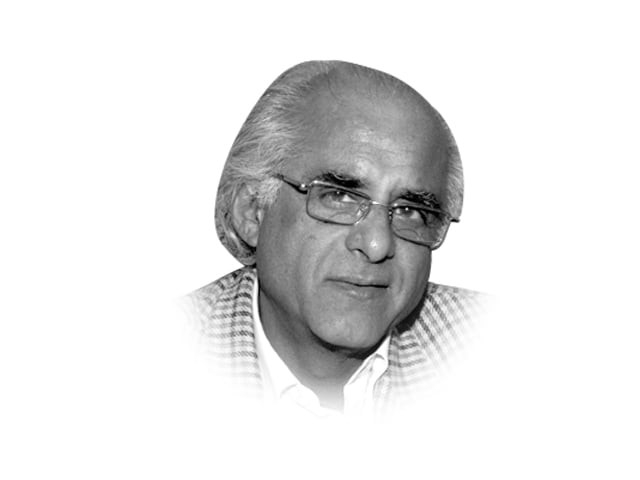Tilla Jogian
Damage to the ancient monasteries was not caused by nature but by vicious hand of modern day treasure hunting Abdali.

Tilla Jogian
Established in the 1st century BCE by the celebrated Guru Goraknath, the founder of the sect of Kanphatta (pierced ears) jogis, it lived for a full two millennia before it was finally abandoned in 1947 following the greatest transmigration in human history. In the 16th century, Akbar the Great visited the monastery — twice in four years — and was much impressed by the practices followed by the jogis. He marvelled at the great age of establishment.
In 1748, the brigand chieftain Ahmad Shah Abdali sacked and looted the monastery. But barely had he withdrawn and the smoke cleared, that the monks and jogis returned to rebuild and revitalise the age-old school.
In 1974, a friend and I went there and found a pristine, mysterious and utterly deserted clump of buildings. Young and ignorant, neither of us could date the buildings. Now, I know that they range from the mid-18th century to the first decade of the following, with some earlier ruins peaking from beneath to the uppermost layer.
There was one building from the last decade of the 19th century. This was a colonial bungalow, a rest house built to accommodate the deputy commissioner and his retinue during the months of April through August when the administration shifted to the cool hilltop. I returned again in 1986, only to find the rest house demolished and replaced by a new building. Two years later, this building was also in ruins, the doors and windows having been torn asunder, the interior vandalised and plundered much like Abdali had done over two centuries earlier.
Thereafter, I returned again and again, spending more and more time examining the ruins. I realised that the nearly two dozen samadhs my friend and I had seen in 1974 near Akbar’s tank were systematically being demolished. Sometime in the late 1990s, I noticed that the floors of two temples were uprooted. Until then, still too naïve to understand the real reason for this damage, I attributed it to the hatred we harbour for all built heritage of non-Muslim origin.
I stumbled upon the truth when, purely by chance, I ran into a man selling old coins. He said he had found them from some building in Tilla Jogian. I then realised this was a modern Abdali, one of many, who was laying the monastery waste.
With the turn of the century, the bile reserved for Tilla Jogian was suddenly magnified. A small and beautiful little domed building at the doorway of the main temple courtyard, nestling under a magnificent olive tree had its roof torn apart. I had admired this particular building since my first visit in 1974 and knew this damage was not caused by nature but by the vicious hand of another modern Abdali searching for treasure and not finding any.
The most heartbreaking act was committed in late 2004. On the western edge of the hill, there stands a building that looks vaguely like a miniature of Jinnah’s tomb in Karachi. This was raised during the reign of Maharaja Ranjit Singh to mark the spot where Guru Nanak Dev performed his 40 days of penance and worship.
First of all, a small opening was made in its north wall and a bit of the domed roof broken. By late 2005, the damage had been enlarged and the floor uprooted. I made every attempt to rouse the sleeping bureaucracy, but to no avail.
And so it continues. Vandals have a free hand whenever they descend upon the most ancient and long-lived monastery of Pakistan. And no one cares.
The miscreants who uproot the buildings searching for treasure are incapable of recognising the fact that those who became jogis gave up everything worldly to follow the monk’s life. They did not bring their wealth to Tilla; they came as paupers. The few coins of little value that some rapacious moron found were a chance discovery.
But we do not care. This country is the same to us as it was to Ahmad Shah Abdali: a foreign land to plunder and destroy.
Published in The Express Tribune, July 21st, 2012.














COMMENTS
Comments are moderated and generally will be posted if they are on-topic and not abusive.
For more information, please see our Comments FAQ